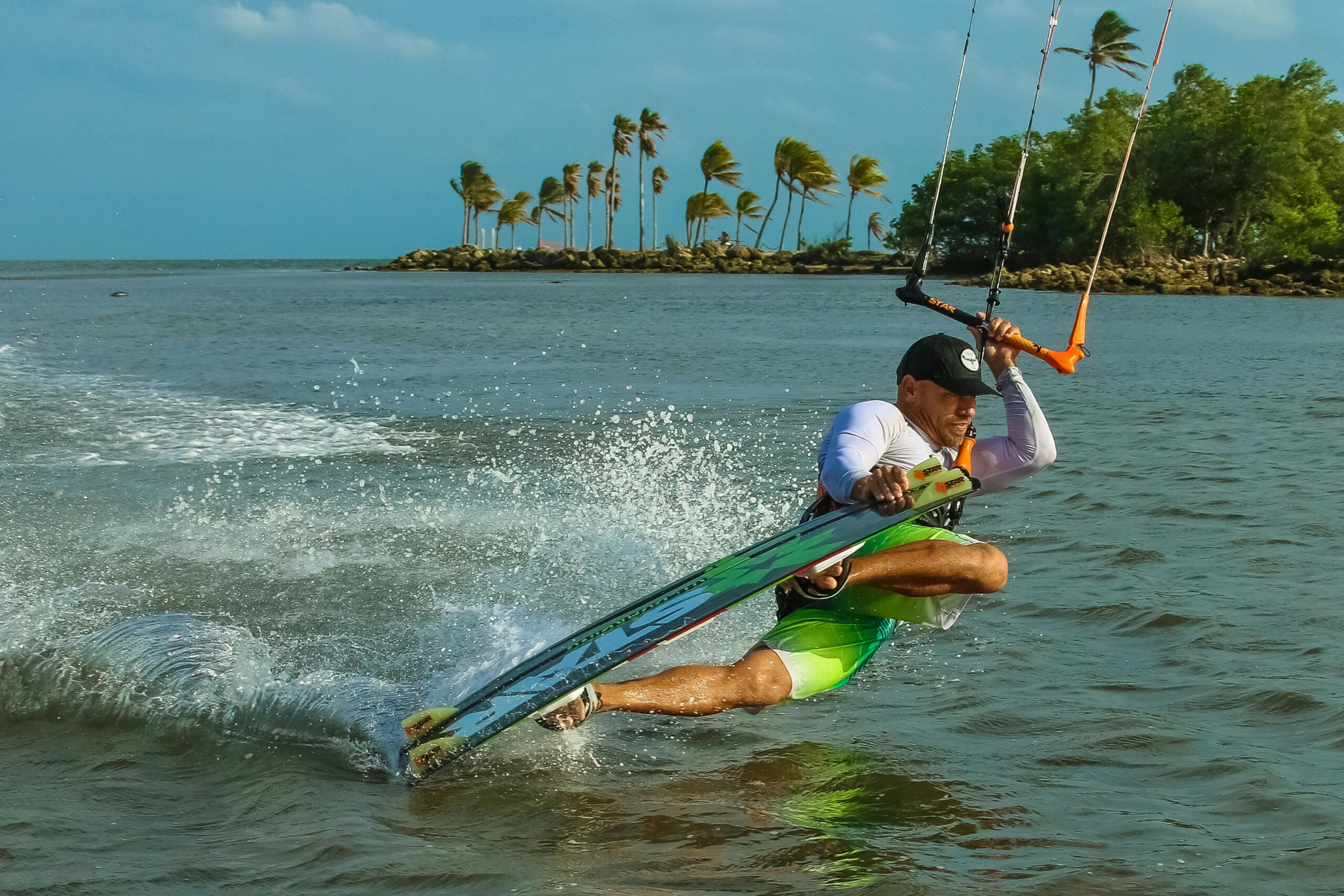Snowkiting and kitesurfing share a core aspect: harnessing wind to glide across surfaces. They differ, though, in their environments and specific equipment. This comprehensive guide will help you understand their distinctions and similarities and provide critical safety information.
What is Snowkiting?
Environment
Snowkiting takes place on snow-covered surfaces like open fields, frozen lakes, or mountainous regions. It’s vital to understand terrain variability as different terrains present unique challenges. Frozen lakes and open snowy fields are ideal locations for snowkiting due to unobstructed wind flow and minimal hazards.
Skills Required
- Snowkiting calls for skiing or snowboarding skills and a good level of physical fitness to manage the equipment.
- It’s essential to understand wind patterns to adjust the kite. Snowkiting can start in much lighter winds compared to kitesurfing, typically around 10-15 mph (16-24 km/h).
Equipment Overview
- Kite: Uses lightweight, durable foil kites or inflatable ones depending on activity. Interested parties can consider the GIN Shaman.
The most popular kite size for snowkiting is 5.0 square meters, ideal for medium winds of 14-20 mph (23-32 km/h). Larger kites (7.0-9.0 square meters) are preferred for lighter winds (10-15 mph), while smaller kites (3.5 square meters) are better for higher winds (over 18 mph).
- Skis or Snowboard: Have bindings for ensured control.
- Harness & Safety Leash: Paired with protective gear for safety. Kitemana provides a range of kite gear suitable for snowkiting.
Learn more about snowkiting equipment and techniques here.
Safety Considerations
- Remember aspects like cold exposure and ice thickness. Safety considerations include hypothermia, ice thickness, and equipment durability in freezing conditions.
- Always check the weather forecast for safety.
For additional insights into snowkiting safety considerations, this Red Bull article offers valuable tips.
What is Kitesurfing?
Environment
Kitesurfing is performed on large bodies of water and can be practiced in different water conditions.
Skills Required
- Strong swimming skills are necessary.
- Understanding board control is critical.
Equipment Overview
- Kite: Inflatable and water-resistant for buoyancy. It is advisable to look for high-quality kiteboarding gear options at Flysurfer.
- Board: Designed for water control.
- Control Bar: Adjusts the kite’s angle and power.
Safety Considerations
- Always align with a buddy for safer kitesurfing.
- Stay updated on local regulations.
Key Differences Between Snowkiting and Kitesurfing
| Feature | Snowkiting | Kitesurfing |
| Surface | Snow/Ice | Water |
| Techniques | Edges of skis/snowboard for control | Foot pressure and fins for direction |
| Equipment Materials and Design | Materials capable of withstanding snow and ice | Designed to be water-resistant and buoyant |
| Seasonality | Winter | Warmer months or year-round in tropics |
Cross-Training Potential: Transitioning Between Seasons
There’s high potential for cross-training between snowkiting and kitesurfing:
- Snowkiting in Winter: Sharpen kite-flying skills and navigate snowy terrains.
- Kitesurfing in Summer: Improve agility on water and aerial techniques.
This helps prevent overuse injuries by changing physical demands on different muscles and offers mental refreshment. Snowkiting and kitesurfing can complement each other, allowing for year-round kite-powered adventures and cross-training opportunities.
Can You Use the Same Kite for Both Sports?
While you can use the same kite, maintenance will be more frequent if used for both sports due to increased wear and tear. Snowkiting requires lightweight, durable kites to prevent tears from ice, while kitesurfing uses sturdy, water-resistant inflatable kites for flotation.
Additional Tips
It’s beneficial to learn from professional instruction to reduce the risk of accidents and to join clubs or groups for additional tips. Also, remember to respect the environment.
For a deeper dive into the world of snowkiting, consider checking out this Snowkiting Wikipedia page.
Conclusion
Whether you’re gliding on snow or surfing waves, snowkiting and kitesurfing provide year-round excitement, packing unique challenges and foundations. Understanding their differences, equipping yourself with the right gear, and following safety guidelines will help you master these thrilling sports.
Speed Records:
- The first person to reach 70 mph (112 km/h) in snowkiting was Joe Levins in 2008.
- Christopher Krug set a new speed record of 73.5 mph (118 km/h) in 2009.
Distance Records:
- Eric McNair-Landry and Sebastian Copeland kite-skied 595 kilometers (370 miles) in 24 hours in 2010.
- The same team completed the first partial east to west crossing of Antarctica using kites, covering over 4,000 kilometers in 82 days in 2011-2012.
